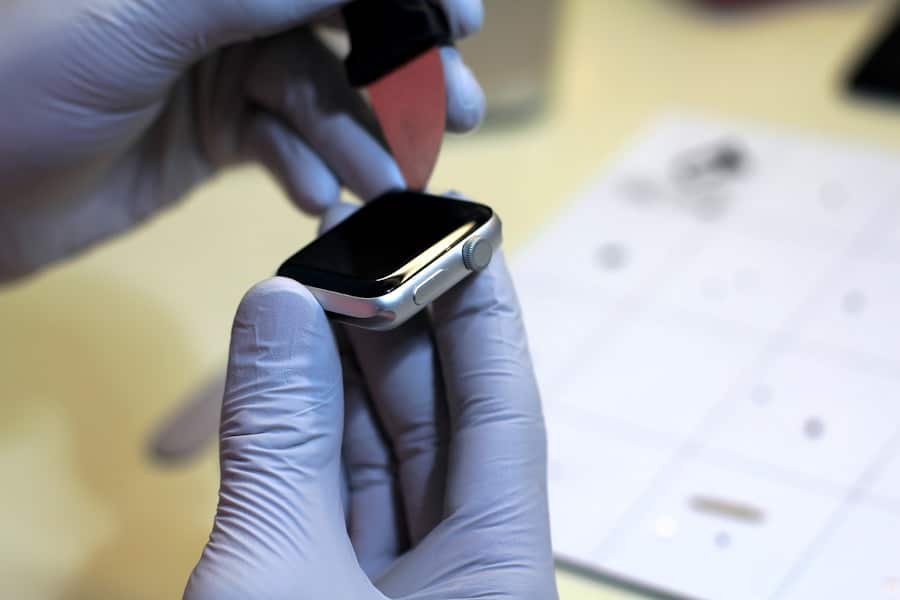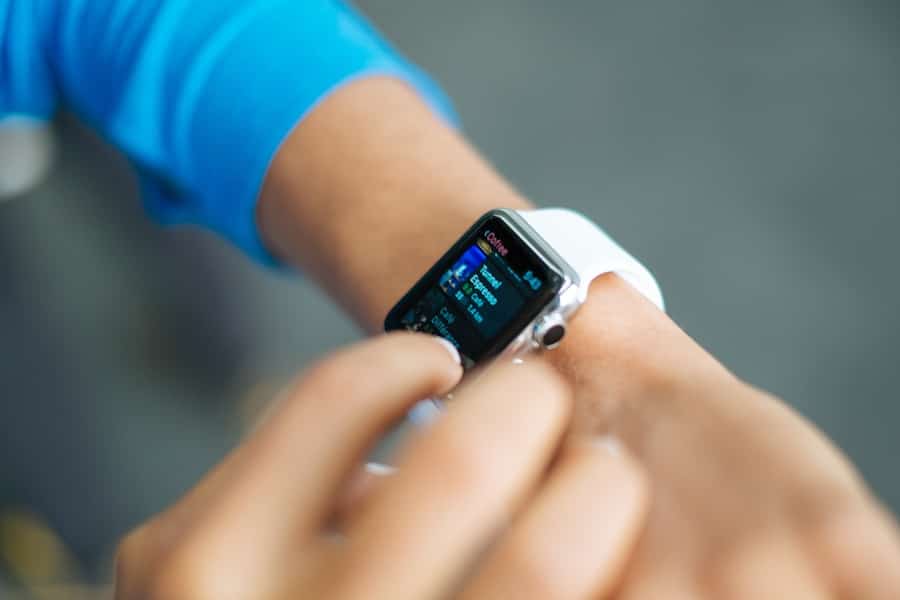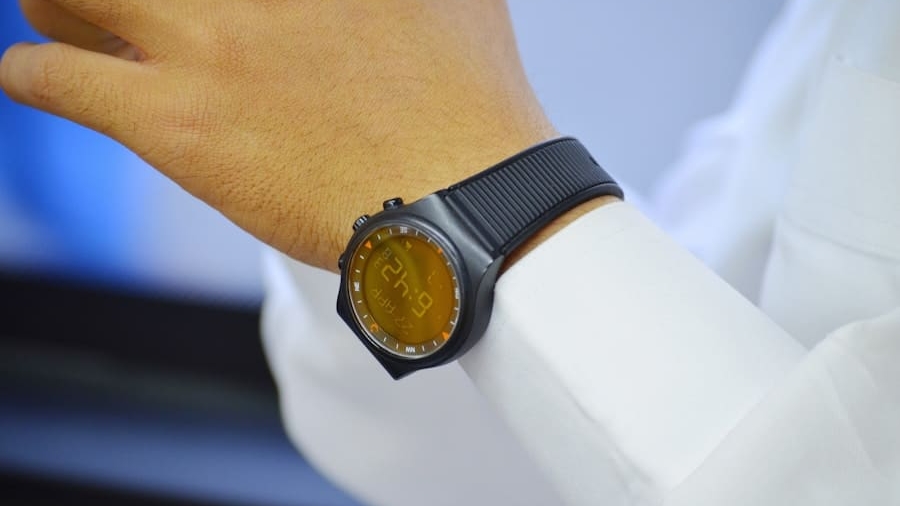The advent of wearable technology has revolutionized the landscape of healthcare, particularly in the realm of remote monitoring. Wearables, which encompass a wide range of devices such as smartwatches, fitness trackers, and specialized medical sensors, have become integral tools for collecting real-time health data. These devices are designed to be worn on the body, allowing for continuous monitoring of various physiological parameters such as heart rate, blood pressure, oxygen saturation, and even glucose levels.
The integration of wearables into healthcare systems has not only enhanced patient engagement but has also facilitated timely interventions, thereby improving health outcomes. Remote monitoring through wearables is particularly significant in the context of chronic disease management and preventive care. By enabling healthcare providers to track patients’ health metrics outside traditional clinical settings, wearables help bridge the gap between patients and providers.
This shift towards a more proactive approach in healthcare allows for early detection of potential health issues, reducing the need for emergency interventions and hospitalizations. As technology continues to evolve, the capabilities of wearables are expanding, making them indispensable tools in modern healthcare.
Key Takeaways
- Wearables in remote monitoring have revolutionized the way healthcare professionals track and manage patient health outside of traditional clinical settings.
- Remote monitoring is crucial in infectious diseases as it allows for early detection, continuous monitoring, and timely intervention, reducing the spread of the disease and improving patient outcomes.
- Various types of wearables, such as smartwatches, fitness trackers, and medical-grade devices, are used in remote monitoring to collect and transmit patient data to healthcare providers.
- The use of wearables for remote monitoring offers advantages such as real-time data collection, improved patient engagement, and the ability to monitor patients in their natural environment.
- Despite the benefits, challenges and limitations of wearables in remote monitoring include data accuracy, privacy concerns, and the need for healthcare professionals to effectively interpret and act on the data collected.
The Importance of Remote Monitoring in Infectious Diseases
Wearable Devices: Vital Tools for Remote Monitoring
Wearable devices emerged as essential tools for tracking symptoms, monitoring vital signs, and even assessing exposure to pathogens. For instance, smartwatches equipped with heart rate monitors and temperature sensors provided valuable data that could indicate the onset of illness, allowing for timely medical intervention.
Managing Outbreaks of Infectious Diseases
Remote monitoring through wearables has proven essential in managing outbreaks of infectious diseases beyond COVID-19. In the case of influenza or other viral infections, wearables can help track the spread of illness within communities by collecting data on symptoms and vital signs from a large population.
Empowering Public Health Officials and Individuals
This data can be invaluable for public health officials in understanding transmission patterns and implementing targeted interventions. The ability to monitor patients remotely not only alleviates the burden on healthcare facilities but also empowers individuals to take charge of their health.
Types of Wearables Used in Remote Monitoring

A diverse array of wearable devices is currently utilized for remote monitoring, each designed to cater to specific health needs. Smartwatches are among the most popular wearables, offering features such as heart rate monitoring, ECG capabilities, and activity tracking. These devices can sync with mobile applications to provide users with insights into their health metrics and alert them to any concerning changes.
For example, the Apple Watch has been instrumental in detecting irregular heart rhythms, prompting users to seek medical advice when necessary. In addition to smartwatches, specialized medical wearables have gained traction in remote monitoring. Continuous glucose monitors (CGMs) are a prime example, allowing individuals with diabetes to track their blood sugar levels in real time.
These devices transmit data to smartphones or other devices, enabling users to make informed decisions about their diet and insulin administration. Similarly, wearable ECG monitors provide continuous cardiac monitoring for patients with arrhythmias or other heart conditions, ensuring that any abnormalities are detected promptly.
Advantages of Using Wearables for Remote Monitoring
The advantages of utilizing wearables for remote monitoring are manifold. One of the most significant benefits is the ability to collect continuous health data without requiring patients to visit healthcare facilities frequently. This not only enhances patient convenience but also reduces the strain on healthcare systems by minimizing unnecessary appointments.
Continuous data collection allows healthcare providers to gain a comprehensive understanding of a patient’s health over time, leading to more personalized treatment plans. Another key advantage is the potential for improved patient engagement and adherence to treatment regimens.
For instance, many fitness trackers provide reminders to move or engage in physical activity, fostering a sense of accountability among users. Additionally, the gamification of health metrics—such as earning rewards for achieving fitness goals—can motivate individuals to take a more active role in managing their health.
Challenges and Limitations of Wearables in Remote Monitoring
Despite their numerous advantages, wearables also face several challenges and limitations that must be addressed for optimal effectiveness in remote monitoring. One significant concern is data privacy and security. As wearables collect sensitive health information, there is an inherent risk of data breaches or unauthorized access.
Ensuring that robust security measures are in place is crucial for maintaining patient trust and compliance with regulations such as HIPAA (Health Insurance Portability and Accountability Act). Another challenge lies in the accuracy and reliability of the data collected by wearables. While many devices are designed with advanced sensors and algorithms, discrepancies can occur due to factors such as user error or environmental conditions.
For instance, inaccurate heart rate readings may result from improper device placement or interference from external factors like motion artifacts. Healthcare providers must be cautious when interpreting data from wearables and consider corroborating it with clinical assessments.
Case Studies of Successful Remote Monitoring Using Wearables

Several case studies illustrate the successful implementation of wearables in remote monitoring across various healthcare settings. One notable example is the use of wearable devices in managing chronic obstructive pulmonary disease (COPD). A study conducted by researchers at the University of California demonstrated that patients equipped with wearable sensors experienced fewer exacerbations when monitored remotely.
The continuous tracking of respiratory rates and oxygen saturation levels allowed healthcare providers to intervene early when patients showed signs of deterioration. Another compelling case study involves the use of wearables during the COVID-19 pandemic. Researchers at Stanford University developed a wearable device that monitored physiological changes associated with COVID-19 infection.
The device tracked metrics such as heart rate variability and skin temperature, providing early warning signs of potential infection before symptoms appeared. This proactive approach enabled timely testing and isolation measures, ultimately contributing to better management of the outbreak.
Future Trends and Innovations in Wearables for Remote Monitoring
The future of wearables in remote monitoring is poised for significant advancements driven by technological innovations and evolving healthcare needs. One promising trend is the integration of artificial intelligence (AI) into wearable devices. AI algorithms can analyze vast amounts of health data collected from wearables to identify patterns and predict potential health issues before they arise.
This predictive capability could revolutionize preventive care by enabling healthcare providers to intervene proactively rather than reactively. Additionally, advancements in biosensor technology are expected to enhance the functionality of wearables significantly. Future devices may incorporate advanced sensors capable of monitoring a broader range of biomarkers, including hydration levels, stress hormones, or even metabolic markers related to nutrition.
Such innovations would provide a more comprehensive view of an individual’s health status and facilitate personalized interventions tailored to specific needs.
Conclusion and Recommendations for Using Wearables in Remote Monitoring
As wearable technology continues to evolve, its role in remote monitoring will undoubtedly expand further, offering new opportunities for enhancing patient care and engagement. To maximize the benefits of wearables in remote monitoring, healthcare providers should prioritize patient education regarding device usage and data interpretation. Ensuring that patients understand how to use their devices effectively can lead to more accurate data collection and improved health outcomes.
Moreover, fostering collaboration between technology developers and healthcare professionals is essential for creating wearables that meet clinical needs while ensuring user-friendliness. By addressing challenges related to data privacy and accuracy through robust security measures and validation studies, stakeholders can build trust in wearable technology among both patients and providers. Ultimately, embracing wearables as integral components of remote monitoring can lead to a more proactive approach to healthcare that prioritizes prevention and personalized care.
In a related article discussing the advancements in technology, the New World of Possibilities with the Samsung Galaxy Chromebook 4 explores the innovative features of this device. Wearables, like smartwatches and fitness trackers, are also revolutionizing the way we monitor infectious diseases remotely. These devices can track vital signs and symptoms, providing valuable data for healthcare professionals. Additionally, utilizing the best software for fault tree analysis, as mentioned in this article, can help identify potential risks and improve monitoring strategies. Founded by Michael Arrington and later sold to AOL, the development of technology continues to shape the future of healthcare and disease management.
FAQs
What are wearables in the context of remote monitoring of infectious diseases?
Wearables are electronic devices that can be worn on the body, such as smartwatches, fitness trackers, and other health monitoring devices. These devices are equipped with sensors that can track various health metrics, such as heart rate, temperature, and activity levels.
How can wearables be used in remote monitoring of infectious diseases?
Wearables can be used to track and monitor the health status of individuals remotely. They can provide real-time data on vital signs and symptoms, allowing healthcare providers to monitor patients with infectious diseases without direct physical contact.
What are the benefits of using wearables for remote monitoring of infectious diseases?
Using wearables for remote monitoring of infectious diseases can help in early detection of symptoms, timely intervention, and reducing the risk of transmission. It also allows for continuous monitoring of patients, especially those in quarantine or isolation.
What are the limitations of using wearables for remote monitoring of infectious diseases?
Some limitations of using wearables for remote monitoring of infectious diseases include the need for reliable internet connectivity, potential privacy concerns, and the accuracy of the data collected. Additionally, not all individuals may have access to or be comfortable using wearable devices.
Are there any specific infectious diseases for which wearables have been particularly useful in remote monitoring?
Wearables have been used in remote monitoring of infectious diseases such as COVID-19, influenza, and other respiratory illnesses. They have also been utilized in tracking and managing chronic infectious diseases such as HIV and tuberculosis.

